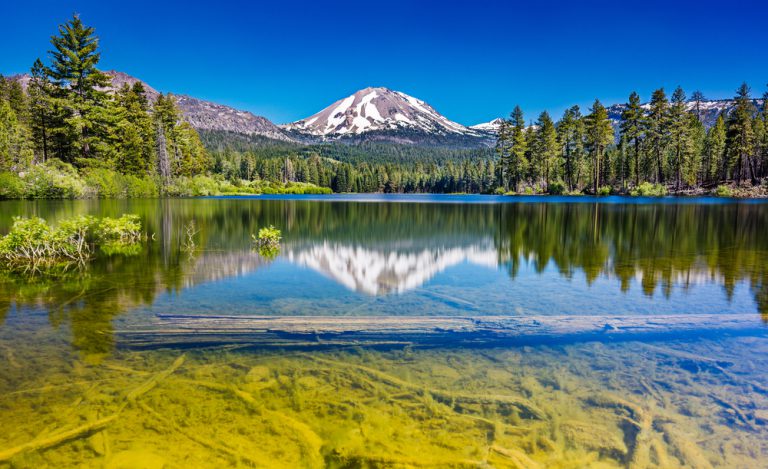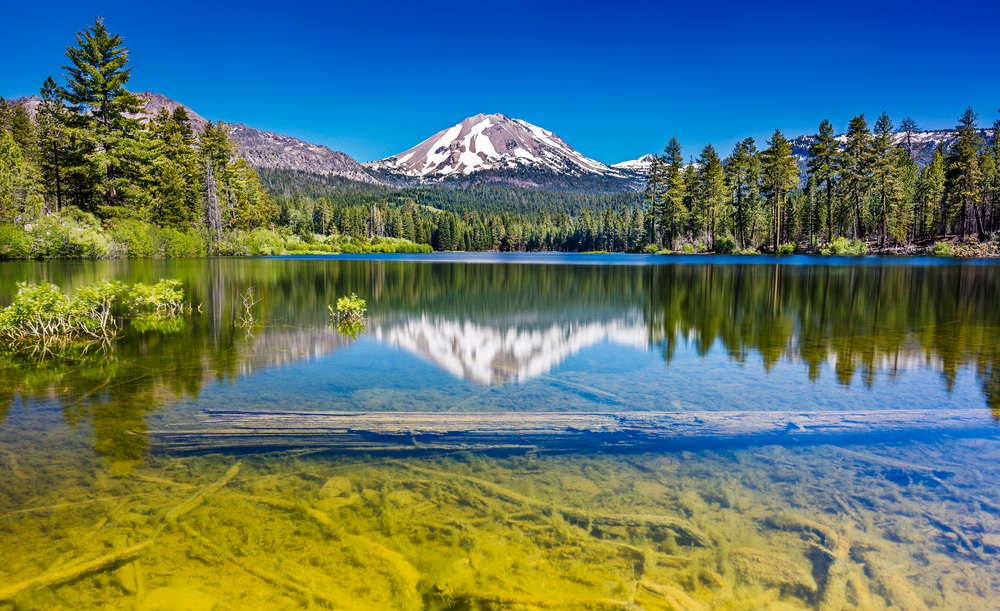
Often overlooked in favor of California wildernesses with bigger names (think: Big Sur, Yosemite, Joshua Tree), Lassen Volcanic National Park truly is a worthwhile gem of a destination. Visitors can experience steaming fumaroles, bubbling mud pots, geysers, and verdant alpine meadows made even more lush by their volcanic history. With four distinct different types of volcanoes within its bounds and over 150 miles of hiking trails, this place truly is an education all to itself, even for the most avid outdoor enthusiast.
Like many other American wildernesses, the place we today call Lassen Volcanic National Park also enjoys a long and storied human history that extends well beyond the bounds of westernized, colonial history. Lassen Volcanic National Park rests on the historic and ancestral grounds of the Atsugewi, Yana, Yahi and Mountain Maidu people, who traveled through these lands during the warmer months as they made their hunting and gathering circuits.
The Indigenous History of Lassen Volcanic National Park

Although the area wasn’t suited to permanent settlement because of its high altitude, snow level, and other conditions, Lassen Volcanic National Park was (and is) a grazing ground for deer during the warmer months, which pulled the above-mentioned tribes toward it as part of their hunting and gathering travels. The different tribes made their semi-permanent camps in different parts of the park, as outlined on the National Park Service website, and travelled to follow the deer as they migrated throughout the year.
Additionally, the Atsugewi considered Hat Creek an important fishing site and spent much of their time along its shores, preparing for harsh winters. The Maidu have lived at the southeastern foot of Lassen Peak, or Kohm Yah-mah-nee, since time immemorial. The Yana and Yahi peoples populated the areas below both Lassen and Shasta, feasting on deer, salmon, and acorns and each celebrating life with their own unique band of rituals, arts and ceremonies.
The descendants of these Native Americans still live in what is now called California and beyond, and continue to participate in and bring to life ancient cultural and spiritual customs even in the wake of modernization and westernization. The National Park Service regularly invites enrolled tribal members to come to the park and offer their stories and histories to visitors, as well as to provide input on the interpretive signage and other exhibits that summarize and explain their cultures to outsiders.
Paying Respect to the Land
Thank you for reading this write-up on the Indigenous history of Lassen Volcanic National Park — doing so is the first step toward fully understanding your place in the larger context of this landscape’s history. But it’s just that: a first step.
Because unspoken (or unheard) Native histories aren’t just a reality at Lassen Volcanic National Park: they’re a reality everywhere in America and beyond. No matter what wilderness or cityscape you’re standing in, you’re standing on the ancient, ancestral land of someone’s long-standing history. Native Land can help you learn more about whose history, exactly, as can seeking out informative posts like this one and the information available from the National Park Service.
Finally, keep in mind that education is good, but action is even better — and as visitors to these places, it is up to us to take up the stewardship that was so well exemplified for us by the First Peoples who originally lived alongside these lands. Leave No Trace offers some excellent guidelines for visitors wishing to leave a minimal impact on the lands they visit, including such tenets as traveling and camping only on durable surfaces, packing out all the garbage you pack in, and maintaining a respectful distance from wildlife.
Lassen Peak National Park is truly an otherworldly landscape, and one that our future generations deserve to enjoy, too. Breathe deeply and take it all in — and don’t forget to leave it better than you found it!

